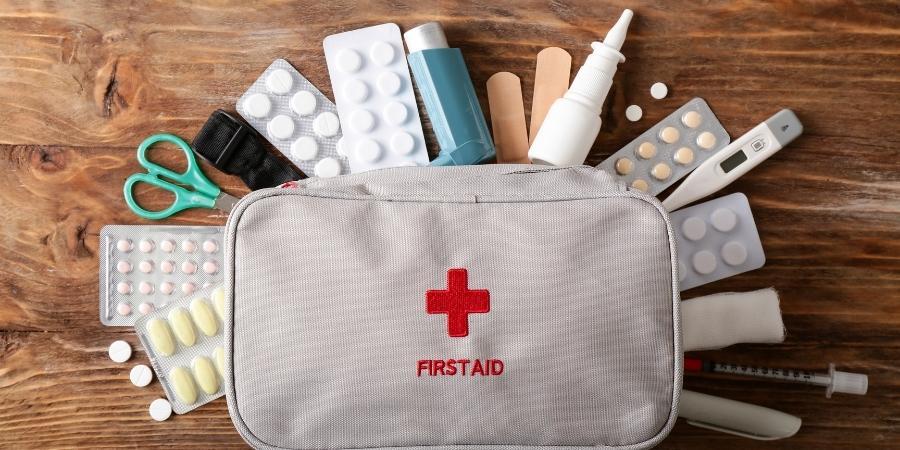
Elevating First Aid Proficiency With Improved Manual Handling
mississauga First aid courses expertise is important as it equips individuals with the necessary knowledge and skills to offer immediate emergency assistance. Within this realm, manual handling is a crucial facet of first aid, encompassing the physical actions required to move or aid an injured or immobile person. Acquiring comprehensive training in proper manual handling techniques from a trusted source, such as FirstAidPro’s Manual Handling Course In Morphett Vale, is advisable and essential.
Mastering manual handling skills ensures the safety and well-being of both the responder and the injured party. This guide delves deeply into manual handling, emphasising its significance within the context of first aid. It explores procedural details, recommended practices, and optimal approaches to manual handling, shedding light on a comprehensive understanding of its relevance and importance in the field.
Understanding Manual Handling within First Aid
Manual handling within the scope of first aid involves the precise lifting, transferring, and positioning of an injured person to prevent worsening their condition. This encompasses a range of activities, including moving a casualty to a different location, aiding them in assuming a comfortable position, and providing limb support during procedures such as splinting or bandaging. The Manual Handling Refresher Course Offered by FirstAidPro in Adelaide or Morphett Vale locations is the optimal choice for healthcare professionals seeking a refresher course.
Significance and Relevance
Preventing Further Injury: The primary objective of manual handling in first aid is to prevent the escalation of injuries. Incorrect lifting or moving techniques can lead to additional harm, including sprains, strains, or fractures. Adhering to proper manual handling techniques minimises the risk of harm to both the responder and the injured individual.
Facilitating Immediate Care: In emergencies, proficient manual handling ensures the swift administration of medical care. Safely and efficiently moving an injured individual facilitates quicker and more effective treatment, potentially reducing complications and long-term damage.
Enhancing Comfort: Proper manual handling techniques contribute to the comfort of the injured party. Minimising unnecessary movement and reassuring can alleviate pain and anxiety while awaiting professional medical assistance.
Mastering Techniques of Manual Handling
Thorough Assessment: A meticulous assessment of the situation is essential before engaging in manual handling. This involves gauging the severity of the injury, identifying potential hazards, and devising a suitable approach for transferring the casualty.
Clear Communication: Effective communication is paramount. Explaining the plan to the injured party and securing their cooperation is vital. If the injured individual is conscious and able to cooperate, providing precise instructions gradually is key.
Safe Lifting and Movement: During lifting, it’s important to bend your knees while maintaining a straight back. Utilise the strength of your legs rather than your back to lift the person. Maintain a firm grip while keeping the casualty close to your body, avoiding sudden movements or twists that could strain your muscles or harm the casualty.
Smooth Transfers: When transferring an individual from one surface to another, ensure the receiving area is clutter-free and stable. Slide sheets or blankets can minimise friction during transfers.
Optimal Positioning: Proper positioning is indispensable for the comfort and safety of the injured party. Employ pillows or rolled towels to support limbs, especially when immobilising with splints or bandages.
Assisting Movement: In scenarios where the casualty needs to adjust their position, providing gradual assistance while ensuring stability before releasing your grip is essential.
Utilising Equipment: When available, medical aids such as stretchers, backboards, or lifting devices can facilitate safe manual handling. Always adhere to the manufacturer’s guidelines when employing such equipment.
Best Practices for Manual Handling in First Aid
Thorough Training: Gaining comprehensive training in manual handling techniques through certified first aid courses is a cornerstone. These courses provide hands-on experience and guidance on implementing safe and effective methods.
Embrace Collaboration: Whenever possible, involve additional individuals in the manual handling process. Having extra hands can make the task safer and more manageable.
Adapt to Each Situation: Recognise that each situation may demand a unique approach to manual handling. Evaluate the circumstances and adjust your techniques accordingly.
Prioritise Self-Preservation: Ensure your safety by employing proper body mechanics and techniques. Avoid exceeding your physical or mental limitations.
Documenting Actions: After providing first aid, documenting your manual handling actions can benefit medical professionals. This information can guide subsequent treatment decisions.
Conclusion
Mastering manual handling is pivotal in safeguarding both the responder and the injured individual in a first-aid scenario. By grasping the importance of proper manual handling techniques and integrating them into your first aid skill set, you enhance your ability to provide efficient and secure assistance during emergencies. By embracing knowledge, refining skills, and adhering to best practices, you hold the potential to significantly impact the lives of individuals in dire need of care. Through these efforts, you contribute to a safer, more knowledgeable community, ready to respond effectively to unforeseen circumstances.







